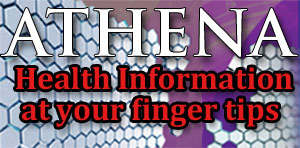Iliotibial Band Syndrome
Iliotibial Band Syndrome or 'Ilitibial Band Friction Syndrome' is a common sports injury generally associated with running. This syndrome is bound to cause lateral knee pain in runners. This injury can also be caused by biking, hiking and weight lifting. This Iliotibial band is a thick fibrous tissue that runs from the outside of the pelvis, over the hip, knee and below the knee joint. The band stabilizes the knee during movements like running. The band coordinates with several other thigh muscles and moves from behind the femur in the thigh to the front during the gait cycle. The Iliotibial Band Syndrome refers to the superficial thickening of the tissue that is on the outside of the thigh. Continuous rubbing and flexing of the band causes irritation usually over the outside of the knee joint.
Common causes of the Iliotibial Band Syndrome among runners
- Iliotibial Band Syndrome occurs when the level of activity increases especially among runners who tend to increase their mileage. Increasing distance too quickly or excessive downhill running is a common cause among runners.
- Poor training habits in runners can cause this syndrome. While running on an indoor track, the leg bends slightly inwards and this causes extreme stretching of the Iliotibial band and the resultant injury.
- Inadequate warm up and cool down sessions among sports persons can cause this syndrome.
- While cycling, having the feet 'toed in' at an extreme and excessive angle can cause the Iliotibial band injury.
Individuals with anatomical abnormalities of the leg such as bow legs, high or low arches, overpronation of the foot and uneven leg length are prone to this condition. Muscle imbalance such as weak hip abductor muscles can lead to iliotibial band syndrome.
Symptoms of this syndrome include pain in the knee joint that worsens with continued movement and resolves on rest. There is persistent pain below the knees or stinging sensation just above the knee joint. Often swelling or thickening is noticed at the point of knee joint where the band moves over the femur. Persons suffering these symptoms must avoid running downhill or squatting, playing tennis or basketball and indulging in martial arts.
Treatment for Iliotibial Band Syndrome normally begins with applying ice the area of injury, selection of proper footwear and stretching routine. While icing, the injured part has to be kept elevated as this helps to reduce swelling. Anti-inflammatory medications and cortisone injections may be prescribed to reduce the inflammation. Surgery is rarely resorted to.
Tennis Elbow
When there is inflammation of the tendons on the outside of the elbow at the lateral epicondyle of the upper arm, the condition is known as tennis elbow. This condition is caused by certain repetitive movements of the wrist Tennis players are not the only people who are affected by this condition, which is also known as lateral epicondylitis. Activities like hedge clipping, tennis, excessive use of a screwdriver or hammer, painting or any such activity that involves repetitive motion of the wrist which also requires constant gripping may lead to tennis elbow. Though, the real cause of tennis elbow is not clearly defined, it is due to tears of the tendons that attach the forearm muscles to the bone of the arm at the elbow joint.
Symptoms of tennis elbow
- Pain over the outside (lateral) of the elbow
- Pain while lifting or carrying objects or gripping even light objects such as a coffee cup.
- Pain radiates down the forearm.
- Tenderness is felt on or below the joint's bony prominence.
- Pain due to tennis elbow may last for about 6 to 12 weeks.
- The discomfort may be for a short duration or it may last for several years.
Normally the pain due to tennis elbow sets in gradually, though at times it may also occur suddenly. Most patients complain of pain in the dominant arm. Manual workers like painters, plumbers, carpenters and gardeners who use their hands face the risk of developing this symptom. Many sports participants like racquet sports players, golfers, fencers are also prone to tennis elbow syndrome.
Tennis elbow is not simply caused by inflammation of the tendons alone, consider experts. The degenerative process either due to aging, or repetitive use of the forearm may also be responsible. If there is poor blood flow in that area, it does not heal completely and accessing nutrition and oxygen necessary for healing becomes difficult. This condition will lead to small tears in the tendon because of its degeneration and is revealed as symptoms of tennis elbow.
X-rays help to diagnose tennis elbow for patients who have the usual symptoms near their forearm. If the doctor has any confusion, an EMG is sometimes obtained to confirm the diagnosis of a tennis elbow. Pain over the outside of the elbow may sometimes occur due to instability of the joint, elbow arthritis and radial tunnel syndrome. Though the symptoms of these conditions are normally distinct, they can be confusing at times.
Even after the initial injury is healed, these areas tend to tear again. Hemorrhage will result because of this condition and there will be formation of rough, granulated tissue and calcium deposits within the surrounding tissues. Inflammation is caused due to leakage of collagen. The blood flow in this area is cut off because of the pressure developed due to inflammation. It can also squeeze the radial nerve that controls muscle in the arm and hand.
When your elbow is involved in any activity, always take care to warm up your arm for a few minutes before starting. Apply a pack of ice over the arm for 15 or 20 minutes, if you experience severe pain in that area after use. If the usual measures like rest, anti-inflammatory medications and stretching routine do not yield good results, then in rare cases surgery is considered. Tennis elbow can be prevented by:
- Lifting objects with the palm facing your body.
- Using hand weights, you can do strengthening exercises.
- Before starting any stressful activity, stretch the relevant muscles by grasping the tips of your fingers.
- Be cautious to avoid a relapse. Try to modify or just discontinue the action that caused the strain. Frequent breaks during the activity will help prevent this condition.
- Strapping a band around your forearm just below the elbow will help as a support. Using bands can cut off blood circulation and thus delay healing and so it is best to use these bands only after tennis elbow has healed completely.
Canker sore
A canker sore or aphthous ulcer is a painful mouth sore. It can appear on the inner surface of the cheeks or palate. Typically it starts off as one painful bump that goes on to becoming an open ulcer. It can be accompanied by fever or uneasiness. Appearance of canker sores can be attributed to stress, hormonal fluctuations, food allergies, deficiency of certain vitamins and minerals such as vitamin B12, iron, and folic acid, lack of sleep and immune reactions. Dental braces can often lead to aphthous ulcers. Canker sores take about a week to heal. Maintaining good oral hygiene and getting routine dental checkups can prevent such a condition. Zinc supplements, anti-inflammatory medications and analgesics are most often prescribed. A person suffering canker sores must avoid hot and spicy food. Applying Milk of Magnesia or diluted hydrogen peroxide can aid the healing. In very severe cases, corticosteroids are prescribed.
Tags: #Iliotibial Band Syndrome #Tennis Elbow #Canker soreAt TargetWoman, every page you read is crafted by a team of highly qualified experts — not generated by artificial intelligence. We believe in thoughtful, human-written content backed by research, insight, and empathy. Our use of AI is limited to semantic understanding, helping us better connect ideas, organize knowledge, and enhance user experience — never to replace the human voice that defines our work. Our Natural Language Navigational engine knows that words form only the outer superficial layer. The real meaning of the words are deduced from the collection of words, their proximity to each other and the context.
Diseases, Symptoms, Tests and Treatment arranged in alphabetical order:

A B C D E F G H I J K L M N O P Q R S T U V W X Y Z
Bibliography / Reference
Collection of Pages - Last revised Date: December 18, 2025



